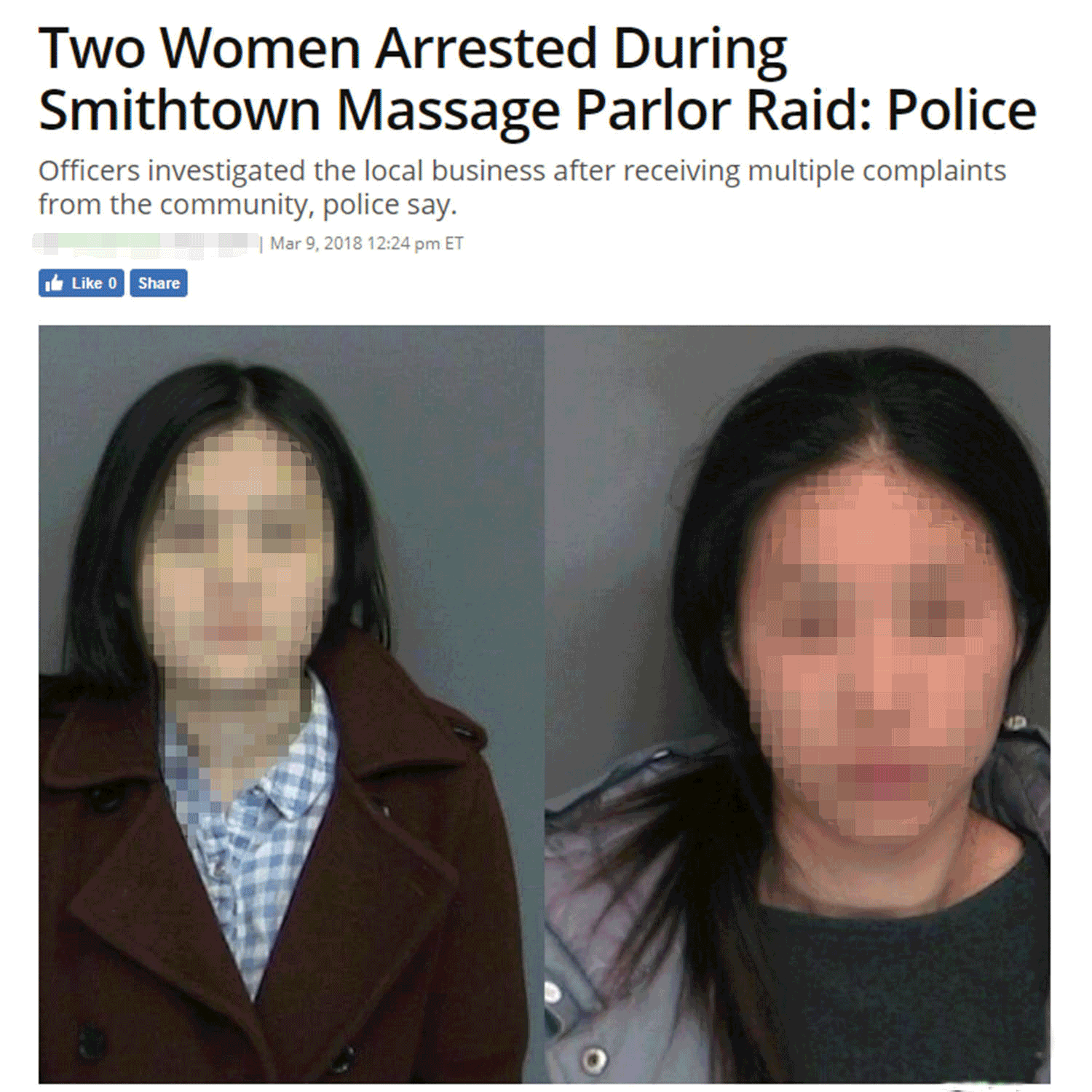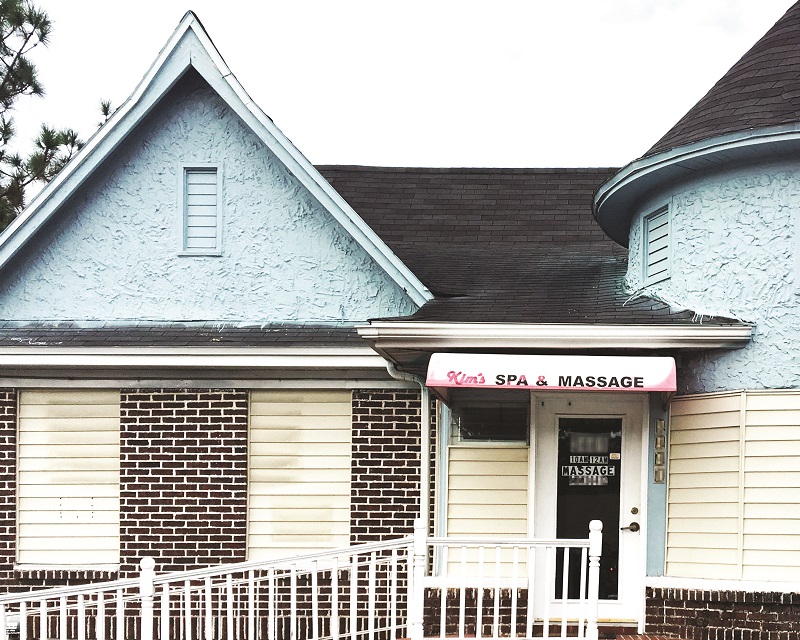
Do you remember the last time you saw a story in your local news about illicit activities at a massage business? Maybe it looked something like this:

What you might not have realized is that many of the women in the photos are actually human trafficking victims. Instead of being protected like other victims of crime, they are being exposed and publicly shamed.
Why are victims not being identified as victims?
Human trafficking victims rarely self-identify as victims to police. That is why police raids are not effective ways of helping victims or reducing trafficking in massage businesses. In massage industry trafficking, self-identification is probably less likely as the victims are most often recent immigrants who likely have a limited grasp of the language and – if they are from some countries – a well-honed and well-justified distrust of police.
What’s the fix?
We are asking for a couple of things – one pretty simple, one less so.
First and foremost, just stop identifying people arrested in these raids. In fact, stop reporting on these raids at all – at least not in a perfunctory, one-day blotter story kind of way that defies context. That’s the easy part. At the very least, treat the people arrested in the massage industry vice operations as you would treat any other victim of sexual abuse. These are high-volume, low-pay, inherently abusive operations in virtually every instance, whether the abuse amounts to trafficking or not.
Next, do better, deeper reporting. We recognize that this is challenging in today’s newsrooms, where you barely have the bandwidth to eke out a few paragraphs from the police scanner. But we ask that you hold on to the idea that there are stories to be told here beyond cops-and-bad guys.
Consider, for example, the economics of these businesses – the sheer volume of trade that would have to occur to make them profitable, versus the number of potential buyers of sexual services in your town. Who are the buyers? And why do we never hear about them?
You might also consider actually tracking what happens in this case, after the arrest. Are the women provided with translators who actually understand them? What about men? Is this an entirely women-owned and operated business or is there someone else who is profiting from it who was not arrested? How about buyers? Did they have to pay a fee or fine or were there any other consequences? Where the consequences worse for the women than the buyers?
Please contact us at media@polarisproject.org if you would like to talk through this further.
What can you do?
The next time you see a massage business story that exposes potential victims, or simply doesn’t dig deep enough, use your voice to reach out to the reporter or publication. Here are two ways you can have an impact:
1. Send the reporter an email
A quick email is an easy, private way to make your voice heard. Here’s a sample email you could write:
Subject: Massage parlor trafficking
Hi [reporter’s name],
I just read your piece, “Local massage parlor raided” and wanted to suggest that you reconsider your decision to publish the names of the women arrested. These women may well be victims of sex trafficking. If they identify as victims of trafficking or not, they are certainly working and living in an abusive situation. Shaming them publicly is of no value to the community you serve.
Thank you,
[Your name]
When drafting your email, keep in mind that the reporter likely has no idea that massage parlors are a common venue for human trafficking. Aim to be kind and helpful in your outreach.
You can usually find a reporter’s contact information by clicking on their byline, or by looking them up on Twitter (tip: many reporters have their email addresses in their Twitter bios). If you can CC their editor as well, even better! (that might take a little more digging – editors are usually listed on the publication’s “Staff” or “Contact Us” page).
2. Submit a letter to the editor
This option requires a little more effort than an email, but it’s extremely powerful because of how many people in your community may read your letter.
A letter to the editor is a short (usually 250-300 words maximum) letter published in the Opinion section of the newspaper, expressing a reader’s concerns. When you identify an article you’d like to comment on, the first thing you should do is search for the “Letter to the Editor” submission guidelines for the publication. They’re usually on the Opinion page and will include the word limit and where to send your letter (here’s what the Chicago Tribune’s guidelines look like).
Once you know the parameters, you can make your case about why the article you read doesn’t go far enough in making the connection to potential human trafficking, and how the publication can protect victims going forward by not sharing identifying information.
Some potential points to emphasize include:
- It’s possible human trafficking might be involved in this story
- Reasons potential victims don’t typically self-identify to police
- Ways to dig deeper into the story (use the suggestions listed earlier in this post)
Here’s an example of a letter we had published recently in the Chicago Tribune that hits all of these points. A powerful letter that is likely to be published will be uniquely responsive to a specific article.
Your voice can make a big difference!
There’s no law prohibiting media outlets from publishing the identities of sexual assault victims. The reason none of them do it is because they know it’s not ethical — and that they would face tremendous public outrage if they did.
It’s time to help the media understand that potential trafficking victims belong in this same protected category, and that there’s a deeper story to tell. Your email or letter to the editor can truly be a catalyst for change in your community.

